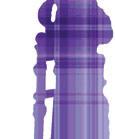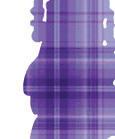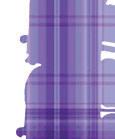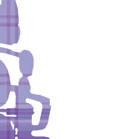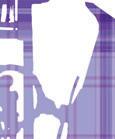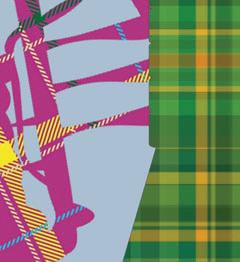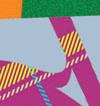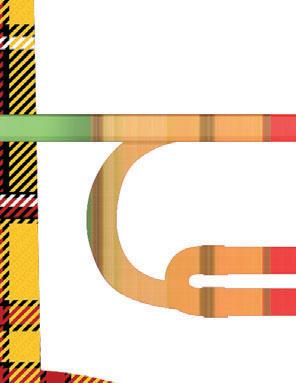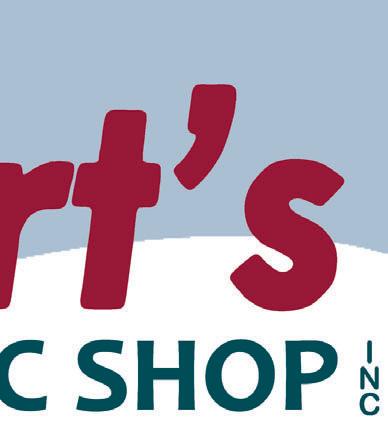














Well, it happened...The strangest spring of our lifetimes. The most odd time we could never imagine. COVID-19 has changed everything we do. We are Zooming, WebEx’ing, Google Meeting, and literally living in the virtual world. It has been an adjustment for everybody, not just music education. However, inside every challenge is an opportunity to grow and learn. From the very beginning of this experience, we have accepted the challenge and taken advantage of the opportunity. I would like to thank the Governing Board and our AMEA Staff for all of their work on bringing the organization two very valuable resources that are now available. First, through the work of Carl Hancock, we have a dedicated space on our website called “Alternative Music Teaching Resources.” It was designed as a receptacle for anything and everything related to teaching music without actually being at school. Please contribute your best ideas, lessons, practices, and finds related to distanced learning. Please also use the ideas which are there already. Our organization has done a wonderful job of sharing knowledge in this new and unusual time. If you haven’t heard, we also have developed a new platform for ongoing Professional Development called the AMEA “Town Hall Meeting/Social.” At the time of this writing, we have hosted our first session, and it was fabulous. Phil Wilson and Susan Smith both gave wonderful sessions packed with useful and valuable information. Thanks to both of these professionals for being the first presenters in this new format. We will continue hosting the Town Hall Meeting/Social every Monday evening at 5:30. The format will develop over time
but expect to see both large group meeting time and break out interest sessions more specific to our various Divisions and classroom situations. Staying connected to our profession is very important, so definitely plan to attend these events.

The two words which seem to define this very interesting time are Engagement and Flexibility. We must stay engaged with our students so that teaching and learning can continue. We must stay engaged with our parents so they know what the expectations are, and so they continue to support our programs. We must also stay engaged in the process of Advocacy. This is not the time to become invisible and allow ourselves to be distracted. Instead, continue to be visible and vigilant. Our students, parents, communities, culture, profession, and art form deserve our very best...all the time. And finally, we must stay engaged with other professionals so that we can help each other thrive in such a different time. We must not allow ourselves to become complacent with lowered expectations. Instead, stay engaged and communicate as much as possible so that we are prepared for whatever the future holds. We must also be flexible. It seems like every day there is a different outlook on the progress of this virus, and the plans continue to change in response. Be flexible with your students and give them opportunities to learn music in different ways. Take the opportunity to teach the things you have always wanted to teach your students, but never had the time. This is that opportunity! Be flexible with
“Our organization has done a wonderful job of sharing knowledge in this new and unusual time.”
your parents and other stakeholders as well. They are working through this, learning to live life differently, and trying to be teachers to their kids just like we are. And be flexible with the administrative structure at your institution. They are trying to figure out how to have school without actually having school. This is a very difficult time for them as well and they will appreciate the music people being flexible.
I would highly suggest being prepared for a multitude of possibilities for what education will look like in the fall. You have all heard the conversations. The State of Colorado has already counseled its District Superintendents to be prepared for schools to not open until January of 2021. Colleges and Universities are also talking about the real possibility that they will not reopen to in-person classes until January of 2021. Nobody really knows what education will look like
in the fall of 2020 yet, and its only four months away. Some school districts in our state have already made plans to include more distanced learning in the curriculum. Will school start on time? Will there be some sort of alternate scheduling scenario? Will there be football games, AKA Marching Band performances? Will schools start on time, and then have to close again? Will we get to be in the same room with our students? I don’t think anybody can honestly answer these questions quite yet. But our response needs to be one of genuine concern, ferocious planning, purposeful engagement, meaningful connection, and fearless flexibility.
I have thoroughly enjoyed being the President of AMEA, and thank you very much for allowing me the opportunity to serve our fabulous organization. It has indeed been one of the highlights of my career. On June 1st,

David Raney will become the President of our organization and I am very much looking forward to his leadership. As I have observed and worked with David over the past two years, I can tell you without a doubt in my mind that he is going to be a wonderful President for the AMEA. We also just completed an election cycle. I would like to thank all the candidates who were willing to serve our organization. Congratulations to Dr. Carla Gallahan for being re-elected as AMEA Recording Secretary and to Dr. Rob Lyda for being elected as President-Elect. We all look forward to your leadership and continued devotion to our profession and our organization. My sincere wish is that each of you stay safe and have a great summer. And regardless of what happens, Music Education is STILL AWESOME in Alabama!
Respectfully Submitted,
Greg Gumina, AMEA President Pat Stegall - AMEA Registrar
Pat Stegall - AMEA Registrar


board is continuing the plans for the 2021 AMEA Professional Development Conference in Montgomery.
Are you ready for some social interaction with real live people? I am, too! Although I have enjoyed the time at home, and video conference lessons and meetings, I am longing for some real, face to face interaction. Hopefully that will come soon. I know you are missing your students, friends, colleagues, and family. I just want to go to my favorite restaurant and have a great steak! In the meantime, we must all be thinking about how the future will be impacted by this crisis. Rest assured, the AMEA
1946 Yale H . Ellis
I hope you have noticed how much better the registration process has become. Thanks to the work of the AMEA Board, Media Specialist-Dr. Carl Hancock, Mary Ann Stegall and all the registration crew that have made this streamlined process so easy. If you must register on-site we have a process for that. Just remember to do what you can online, ahead of the conference. That would include having your membership current, registering at the kiosks provided at the registration area before coming to the main desk, and having your payment method ready. Checks are easy to process at the desk, but online credit card payments must be made at one of the kiosks.
Remember to renew your membership in June. Also, as soon as the conference registration becomes available, register online! I look forward to serving you again, but I really look forward to seeing you at the conference! Stay safe, stay healthy! PS
1972 Frances P. Moss
1974 George Hammett
1975 Frances P. Moss
1976 S . J. Allen
1978 W. Frank McArthur
1980 Paul Hall
1982 Lacey Powell , Jr .
1984 Johnny Jacobs
1986 Merilyn Jones
1988 Ronald D. Hooten
1990 Ken Williams
1996 Johnnie Vinson
1998 Michael Meeks
2000 John McAphee , Jr .
2002 Tony Pike
2004 Becky Rodgers
2006 John Baker
2008 Pat Stegall
2010 Steve McLendon
2012 Sara Womack
2014 Carl Hancock
2016 Susan Smith
1968 Floyd C . McClure
1970 Jerry Bobo
1992 Dianne Johnson
1994 James K . Simpson
2018 Greg Gumina
President Greg Gumina Shades Valley High School 6100 Old Leeds Road
Irondale, AL 35210 (205) 956-4638
ggumina85@gmail.com
Immediate Past President Susan Smith 104 Smith Hall Troy, AL 36082 (334) 670-3322
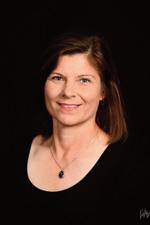
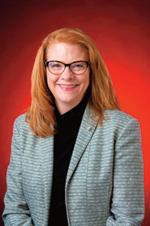
ssmith26024@troy.edu
President, AOA
Guy Harrison 218 Goodwin Music Building Auburn University, AL 36849 (334) 844-8192
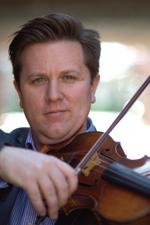
gfh0002@auburn.edu
President, AMEA Collegiate Jackson Vaughan jvaugha1@samford.edu

Industry Representative
Becky Lightfoot Arts Music Shop 3030 East Blvd Montgomery, AL 36116 334/271-2787
beckyl@artsmusicshop com
Executive Director
Editor, Ala Breve Garry Taylor 1600 Manor Dr NE Cullman, AL 35055 (256) 636-2754

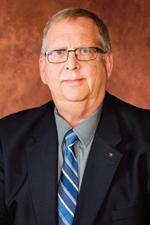

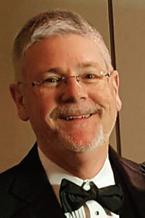

amea@bellsouth.net
President-Elect
David Raney Sparkman High School 2616 Jeff Road Harvest, AL 35749 256-837-0331 draney@madison.k12.al.us
Recording Secretary Carla Gallahan

113 Long Hall Troy University Troy, AL 36082 (334) 670-3502 recording_secretary@myamea.org
President, AVA
Megan Jones Decatur High School 1011 Prospect Drive Decatur, AL 35601 (256) 552- 3011 presidentofava@gmail.com
AMEA Collegiate Advisor

Edward (Ted) Hoffman University of Montevallo Station 6670 Davis Music Building 308 Montevallo, AL 35115 (205) 665-6668 ehoffman@montevallo.edu
Assistant Executive Director

Rusty Logan 2020 Janabrooke Lane Auburn, AL 36830 (334) 663-1702 rlogan9853@gmail.com
Treasurer/Registrar
Pat Stegall AMEA Registration PO Box 3385 Muscle Shoals, AL 35661 treasurer_registrar@myamea.org
President, ABA
Terry Ownby Florence High School 1201 Bradshaw Drive Florence, AL 35630 (256) 768-2200

tsownby@florencek12.org
President, ELEM/GEN
Betty Wilson Deer Valley Elementary 4990 Ross Bridge Parkway Hoover, AL 35226 (205) 296-3311

bettyboop122372@att.net
President, Higher Education Mildred Lanier Jefferson State Community College (205) 983-5309
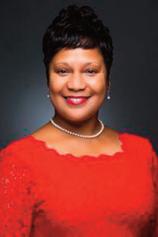
mlanier@jeffersonstate.edu
Alabama Department of Education Arts Education Specialist Andy Meadows 50 North Ripley Street Montgomery, Alabama 36104 (334) 353-1191

ameadows@ALSDE.edu
Garry Taylor, Editor & Advertising Manager 1600 Manor Dr NE Cullman, AL 35055 (256) 636-2754 executive_director@bellsouth net
ADVERTISING & COPY DEADLINES
Fall - August/September (Back to School) issue: July 15

Winter - October/November (Conference) issue: September 15
Spring - May/June (All-State) issue: January 15
Summer - May/June (Digital Only) issue:
Unless otherwise indicated, permission is granted to NAfME members to reprint articles for educational purposes. Opinions expressed in this publication are not necessarily those of AMEA or the Editor. All announcements & submissions are subject to editorial judgement/revision.The Alabama Music Educators Association is a state unit of NAfME: The National Association for Music Education, a voluntary, nonprofit organization representing all phases of music education in schools, colleges, universities, and teacher-education institutions. Active NAfME/AMEA membership is open to all persons engaged in music teaching or other music education work.
Well, this certainly wasn’t the finish of the year we were expecting! I know many of you are missing your students, are disappointed that spring concerts will not be taking place, that graduates will not be recognized for their contributions to your program in ways that have occurred in the past, and are probably feeling some uncertainty around what all of this might mean for the future of your program. However, I am confident we will bounce back, that our programs will thrive as students look for more expressive outlets, and we once again highlight the impact that the arts have on our society.
I hope you have all been able to take advantage of the resources made available through the myamea.org website, and have participated in one of the live townhalls that began taking place in mid-April. I want to thank AMEA President Greg Gumina, AMEA President-elect David Raney, and the entire AMEA leadership for their efforts to continue supporting music teachers as we navigate these challenging times.
While the year did not finish the way we were all hoping, the Alabama Orchestra Association was fortunate enough to be able to hold its annual All-State Orchestra Festival at the University of Alabama’s
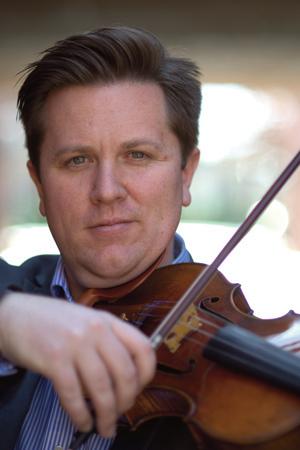
Moody School of Music in early-February. Once again, the festival was a great success. The students were all thrilled with their conductors, as were their parents, and their teachers. One student even asked me if their clinician could come back yearafter-year they enjoyed working with them so much! It is always amazing to see what these renowned conductors can accomplish in a short amount of time. Our Composition Contest winning work Reef by Samford Professor Dr. Mark Lackey was extremely well received by both the students and our audience, and his Meet the Composer session was one of the best I have seen – it could have lasted a few more hours and no one would have been anxious to leave!
We were certainly disappointed that our annual Music Performance Assessment event had to be canceled. However, we look forward to next year’s opportunity and hope that as many programs as possible join us for this relatively new, but important event.

Please be on the lookout for information regarding auditions for the 2021 All-State Orchestra Festival. We will be making some minor adjustments from this last round of auditions and should have more information available soon.

This is my last column as President of the Alabama Orchestra Association and as such, I want to take the time to acknowledge the tremendous support that I receive from the AOA Executive Board, our District Chairs, parent volunteers, and all of the teachers that continue to send students to our events, coach sectionals, lead rehearsals, run audition sites and jump in where needed. Our Executive Director, Julie Hornstein is hands down the single greatest gift any division president could ask for. Without her, we would not be able to continue to run any of the programs we offer. Her knowledge of the organization is second-to-none and I thank her for keeping me on track (amongst other things) when needed.
I am certainly looking forward to seeing the direction our organization takes under its new leadership. I have no doubts that incoming President Dr. Daniel Stevens and President-elect Joseph Lee will take the AOA to new and exciting heights. Please stay tuned for updates from them as we transition and prepare for 20202021.
Thank you all for allowing me to serve as AOA President these last two years. I have appreciated all of your support, guidance, suggestions, and encouragement during this time and I look forward to continuing to support our organization in the years to come. As always, if there is anything that the AOA can do to help you and your program please don’t hesitate to reach out to us.
Regards,
Guy Harrison President,Alabama Orchestra AssociationTroy University is a fully accredited institutional member of the National Association of Schools of Music (NASM)




First and foremost –You matter and music education matters. We are all experiencing a multitude of emotions because of social distancing, leaders saying that spring activities are “done”, and not having the ability to make music in-person. We may even feel like we’ve lost our identifies because so much of who we are is intertwined with being a music teacher. Never forget that you and music education matters to our schools, our communities, and most importantly to children. I believe that serving children is a sacred act and that the classroom is hallowed ground. We will return to our sacred spaces and make music again.
In a recent meeting with NAfME’s state advocacy manager, AMEA was asked to identify specific advocacy “asks” to use as we engage with state legislators. In all honesty, it is difficult to know specific asks because the game has changed. We do not know what the future holds, however, we must be proactive and not wait until it’s too late to advocate. There will always be universal asks – fully funded music programs, music education for all students, and ensuring every school has a certified music teacher, still, our present-day situation brings new challenges to overcome that may not be fully realized. Using this time to be proactive may pay enormous dividends for our programs and build necessary advocacy capital.
Legislators are discussing a “bare-bones” education budget. Schools systems are dealing with the fact that, by some estimates, municipalities will see a reduction in 25% local revenue. Many of our small businesses that have been the backbone of our communities and supported our programs are hurting. In our profession, where most of our positions are locally funded, it is easy to give in to the fears and “what ifs”. However, remember you are important. Don’t allow yourself to dwell in the “what ifs”, but rather, use this time for professional
growth, rest, connection, and advocacy. As we move forward, I believe, the best advocacy tool we have is connection. I know this might sound counterintuitive as many of us are staying home and social distancing. However, we need to think about how important connection is to all of us. Connecting with our students, our school communities, and our local and state leaders is essential during this time. A phone call may be the thing that motivates the singer or band member wondering if they should continue music next year. An email, Facebook post, or YouTube video might be the best recruitment tool for our ensembles right now. A Zoom music meetup or YouTube video might be the biggest advocacy tool you have at your disposal. I have received messages from parents telling me how much they appreciate my weekly YouTube videos and Zoom meetings because it gives them 15-30 minutes of peace! While I’m glad my attempts at connection bring peace to parents, this is also a powerful advocacy moment because it is a reminder of the important place music holds in their child’s life.
I would also encourage you to use this time to connect with your school, local, and state leaders. Find ways to remind and demonstrate that music education is important. The best tool we have is our student’s voice – let the students tell the leaders why music is important. Use your personal, school, and your student’s social media accounts to exclaim the importance of music education.
We were pleased with the response to our “Virtual Hill Day” on March 31st. There is post after post showcasing the importance of music education in Alabama. While tagging posts with a simple advocacy phrase may have been small to us, we may never know the full impact those posts had on influencing lawmakers, parents, or even encouraging disappointed students and

depressed teachers. I encourage you all to continue using social media to tell your story. Please make sure any post about your program or student success is tagged with #ala4musiced.
The AMEA leadership along with NAfME’s state advocacy liaison, Matt Barusch, created a Funding Toolkit document that explains how school systems can use federal money (Title I, IV, and CARES Act) to fund music education. With almost all music positions being locally funded in Alabama, local leaders will need to find ways to make up for lost local revenue. This will create an unfortunate burden on school systems that lack strong local tax structures. Eliminating music in many of our school systems will become an issue of equity and access that will disproportionally impact students of color, in low-income areas, and rural communities. Please use and distribute this resource to your local education leaders.
One last thing – do your best to remain positive. Our students and communities need us to be positive. We can provide the positive stability that our students need and crave during this time. It’s easy to give in to fears and wonder how we will ever be able to do what we used to do. However, try to find the positive. There are free concerts on TV, artists are giving free masterclasses, amazing professional development opportunities are being offered, and we have time. Time is something music educators usually never have at the end of the school year. Positivity can be a powerful advocacy tool.
Never forget – YOU are important and do important work. We will get through this, we will be with our students again, and we will continue to demonstrate why music education is important for all students in Alabama. If I can do anything to help you, please do not hesitate to contact me. I wish you good health, safety, and peace.

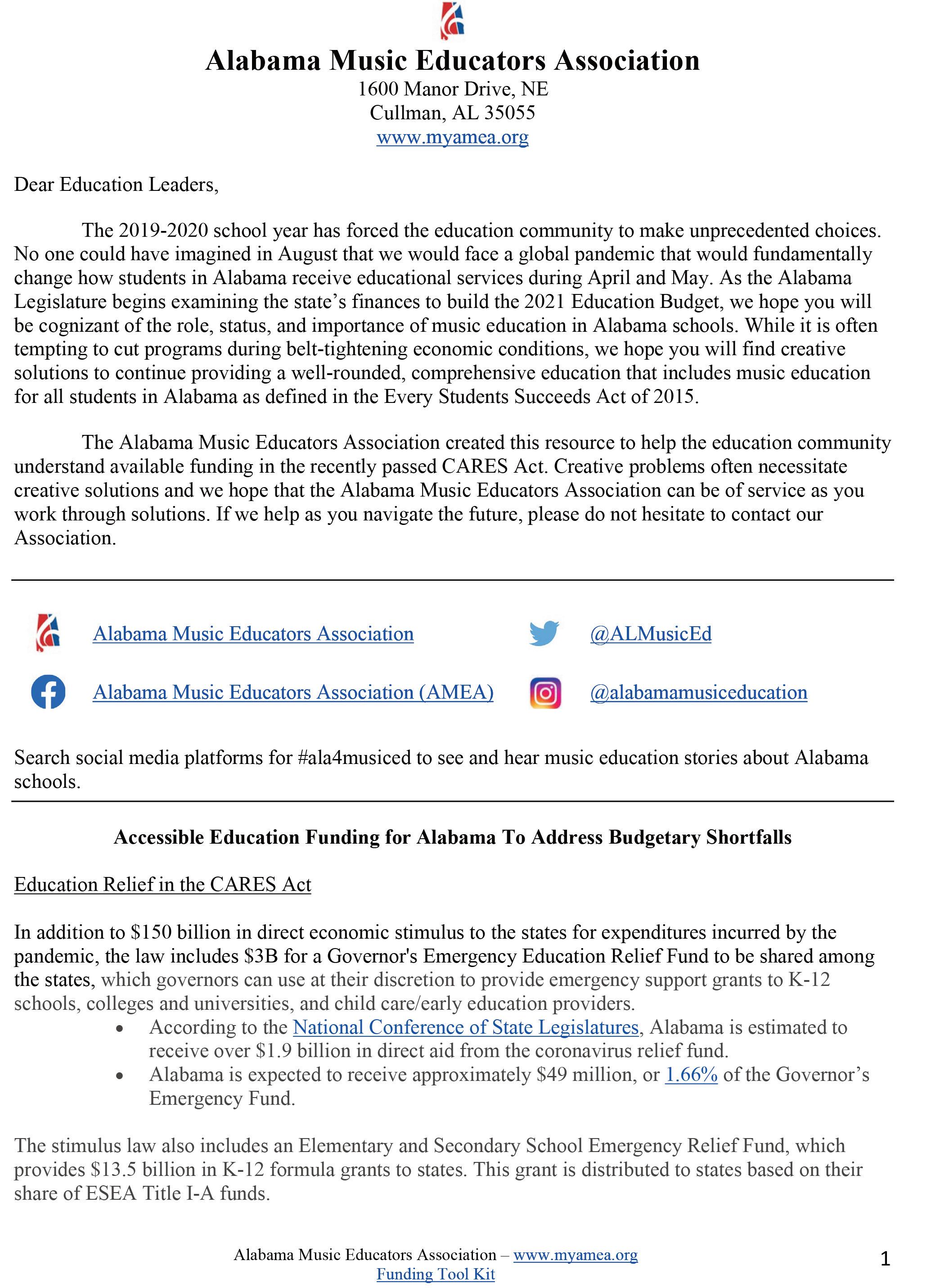

“Yet let's be content, and the times lament, you see the world turn'd upside down.” This is a line from an old English Ballad that dates back to the 1640s when the English Parliament banned portions of Christmas celebrations. Later, it was rumored to have been played by the English at the Battle of Yorktown during their surrender. Probably, the most famous recent quoting of this line is from the musical Hamilton in the song “Yorktown” by Lin-Manuel Miranda. Although historians have searched Revolutionary War records, no source can confirm this tune was one of the songs that was played when the English surrendered. Whether true or rumor matters very little in 2020, as the legend lives on. Now we know that the world [is] turned upside down.
Learning and teaching continue in a way that none of us could have imagined just 6 months ago. While online learning has been in place for many years, most of us were not prepared for what we were asked to do just a few short weeks ago. I received my Master’s Degree from the University of Florida in 2016 through it’s online Music Education program. I feel lucky to have had exposure to the possibilities of online teaching and learning. However, very little of what I did actually transferred over to what I have been asked to do as an elementary music educator. The requirements from our Principals, Schools, and Districts have been wide and varied. Some teachers have been asked to do very little so as not to overwhelm the parents, while others have been asked to deliver the same amount of instruction that the students would have received in the classroom by making and posting videos of themselves teaching. No matter what your school is doing, there are many wonderful resources to help you. Let’s start with a few.
The AMEA Board is working to provide
you with the necessary resources, professional development, and lessons that might meet your needs through our website . Here, you can access a database of online lessons grouped by teaching specialty: band, choir, orchestra, college, and elementary/ general. Each set of lessons is further categorized by topic or objectives. You can contribute to this database when you create something for your classroom. The process is very
Melissa McIntyre for more festival information at The 2021 AMEA
Professional Development Conference is coming up as well. We are currently accepting applications for presenters and performers. We would love to strengthen our Alabama PLC by having great sessions provided by you and your colleagues. Use the link on to submit your session or apply to perform. I would also like to hear from you regarding sessions you’d like to see
offered. Please email me at to suggest presenters or topics you like to see. The deadline for session proposals and performing groups is June 1, 2020.
In closing, I would like to encourage you to keep the faith and stay the course. We are all gifted with many different gifts and are charged to use them to the best of our abilities. I believe we are stronger when we share what we know with others whether online or in person. Thank you again, for your hard work, dedication, and continued support of the Elementary/General Division of the AMEA and the children of Alabama. I can’t wait to see you soon.
Sincerely,
user friendly and I encourage each of you to visit this site. NAfME is also offering professional development and resources on its website . Some of these are even available for non-members. I encourage you to take advantage of these courses and to keep track of your professional development hours. I would also encourage you to reach out to your local Professional Learning Community. We should all strive to “meet regularly, share expertise, and work collaboratively to improve teaching skills and the academic performance of students” () even during this time of school closure.
Speaking of professional development, the Fall Workshop is set for Saturday, October 17, 2020, at Eastmont Baptist Church in Montgomery, Alabama. This workshop directly follows our Elementary AMEA Choir Festival and will feature clinician, Jeremy Howard. The sign-up for the choir festival is open and the deadline is Friday, May 8, 2020. All sign-ups must be completed online using the following link; . Please email
Betty R Wilson, President Elementary/General Division
Upcoming Dates:
Elementary Music Festival, Friday, October 16th, 2020; Eastmont Baptist Church in Montgomery, Alabama.
Joint Fall Workshop sponsored by Elementary/General Division of AMEA, AOSA, and SHAKE, Saturday, October 17th, 9 a.m. to 1 p.m. Eastmont Baptist Church in Montgomery, Alabama featuring clinician Jeremy Howard
NAfME In-Service Conference, Nov 4-8, 2020, Orlando, Florida.
American Orff-Schulwerk Association, National Professional Development Conference, November 11-14, 2020, Kansas City. Registration begins July 1st.

2021 AMEA Professional Development Conference, January 21-23, 2021, Renaissance Hotel, Montgomery, Alabama.



I can’t believe I am writing this final review during a pandemic. This is something I never thought would happen in my lifetime. I have had many challenges in my career but nothing like this. I made it through 9/11 in Washington D.C. while working at Glen Forest Elementary. I made it through being stuck in my house for fourteen days because of a blizzard while working at Linkhorne Middle School. I made it through a tornado destroying my school while working at Center Point Elementary. I lived through sleeping on my music room floor at Vestavia East during the snow/ice storm. Now, I need to make it through e-learning during a pandemic.
One thing that I learned from each of these situations, is that students just want to sing. They want to sing simple songs, play games, and continue with their learning. That is how they return to their normal.
Many of you had opportunities to go into your building to get items that you needed for e-learning. I also had a two-hour window to go in and to get materials. I got five songbooks, flashcards, a racquetball, a tiny purse, and our rubber chicken. When I went into the room, I felt an overwhelming urge to get everything. I also felt panic and sadness. I thought about taking books, a guitar, a ukulele, audio cubes, xylophones, and curriculum books. However, I remembered what my friend, Brittany Hopfensperger, said before I went into the building. She said, “just get things that you know that the children will love!”
This is what I got from my music room and what I am using for elearning:
An American Methodology: This is the #1 book everyone needs in their library. It has a sequential list of skills with lesson plans and song suggestions. In the back of the book are the songs with the games. I will use this as a guide to complete my year-long skills that are planned. (Ann Eisen and Lamar Robertson). An American Methodology: An Inclusive Approach to Musical Literacy. 2nd Ed. Lake Charles, Louisiana: Sneaky Snake Publications, LLC, 2010.
Orff Sources 1 and 2: I will use these songs for simple games that students can play with their families. They can use a racquetball for ball-passing and steady beat games, or a small purse to play “Lucy Locket” or “Hide the Penny.” (Gagne, Denise. The Orff Source. Red Deer, Alberta: Themes and Variations, 2001. Print.) (Amchin, Robert A., et al. The Orff Source Volume 2. Red Deer, Alberta: Themes and Variations, 2011. Print)

My Singing Bird: I will use these songs and games to teach my year-end skills. (Erdei, Ida, et al, ed. My Singing Bird: 150 Folk Songs. The Kodály Center of America, Inc., 2002. Print)
Rhythm and Melody Flashcards: These are good for the end of the year review. (Gagne, Denise. 80 Melody Flashcards. Red Deer, Alberta: Themes and Variations, 1994. Print.) (Gagne, Denise. Rhythm Flashcards. Red Deer, Alberta: Themes and Variations, 1994. Print.)
Year-Long Lesson Plans: For each grade. For me to stay on track I need to continue with what we are doing. I don’t want to re-teach something they may already know and become bored.
A racquetball, small purse, and a purple rubber chicken that squeaks. The chicken is a dog toy that squeaks. I’ve decided to include our pets in online learning.
On my computer, I will use Jeremy Howard’s, Music Makers PDF. This book has many ‘point and sing’ exercises that are great. https://www.facebook.com/pg/musicmakersteacher/posts/
Also, all of my kids have individual Quaver accounts they access through the “Clever” website. This allows them to work at their own pace at home, with their own avatar adventure. My kids love to play the games in the app and are racking up thousands of points all while learning about music.
If I could recommend one website to you it would be this one: The American Folk Song Collection from Holy Name University: http://kodaly.hnu.edu/collection.cfm This is the greatest song collection on the internet. You can search by grade level, rhythmic, or melodic idea. It has an analysis for each song, and it includes movement and game ideas.
Musical Wishes to you!
Stay Healthy and Happy, Deanna
Bell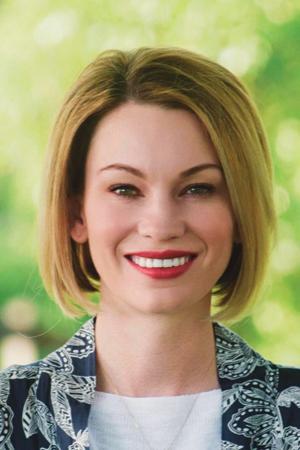
I could never have imagined that I would be writing my final AMEA article during a time of quarantine. I know we are all desperately missing our students, colleagues, and music-making. I’m so grateful that technology is allowing us all to stay somewhat connected, but I know we all can’t wait for the chance to gather to create music again. The need for community created by our choirs has never been more apparent!
I cannot say thank you enough to all of our participating schools and directors for how you adapted to our new location and did so with grace and positivity. The AVA Board has already been evaluating areas for improvement for next year as we look forward to returning to the BJCC. We welcome any ideas you may have to make next year even better.
Thank you to all of our members who served as Choir Coordinator, Assistant Coordinator, Attendance Monitor, or in any other capacity and helped to keep the festival running smoothly. I would also like to specifically thank John Kincaid for his hard work in coordinating our concert site in a brandnew venue!
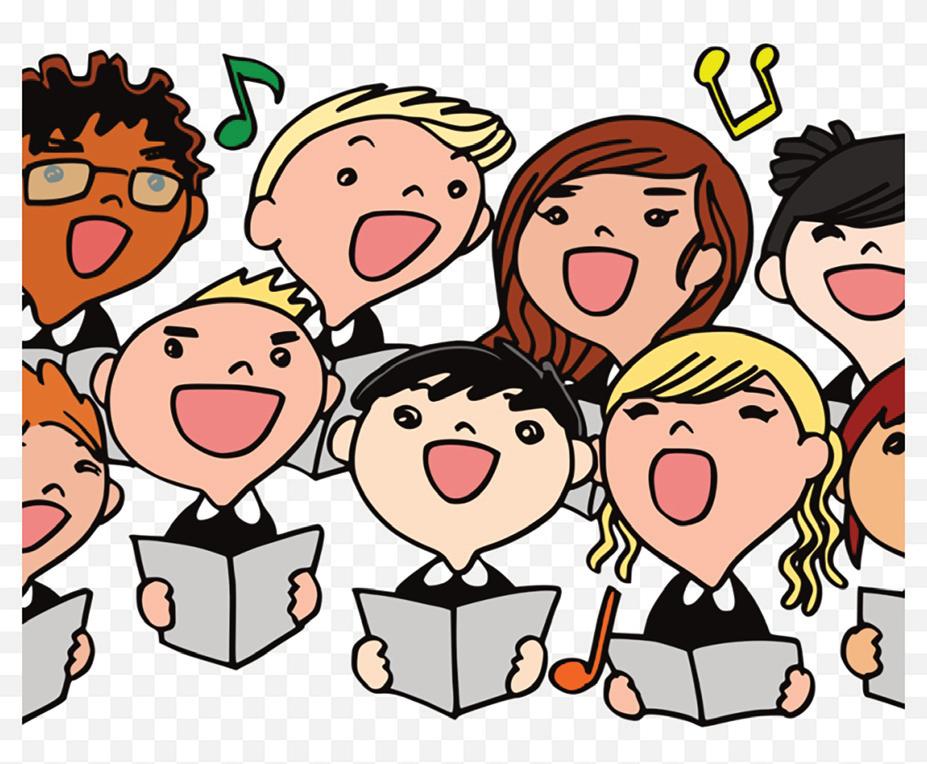
I would also like to say thank you to Melinda Doyle and the University of Montevallo Concert Choir and Brian Kittredge and the UAB Concert Choir for performing for our convocation. I was thrilled to have the opportunity to expose our students to these wonderful choral programs. We look forward to having more university choirs participate in the future. In addition to these convocation performances, we are also planning for next year to invite university choirs to set up recruitment tables in the Forum building so that our students can have the
chance to see what choral opportunities are available to them throughout the state.
Next year’s All-State Festival will be March 4-6, 2021. Again, if you have any ideas for next year’s festival, please let us know.
The 2021 AMEA conference will be January 21-23 in Montgomery. The deadline to submit is June 1. Please do
you are interested in presenting a short, 30-minute session during the workshop, please let us know. Though we love hearing from our guest clinician, it’s so beneficial to hear from our colleagues who are in the trenches with us every day!
The AVA will meet this summer to review and revise the handbook, approve AllState music, and plan events for this coming year. If you have anything that you would like added to the agenda for the board to discuss, please submit it in writing to Randall at randall.fields.ava@ gmail.com before May 29.

not let the fact that we do not have recordings from SCPA this year deter you. Submit Christmas recordings if that is what you have available! I would hate for us to have a small number of submissions this year simply because we did not have SCPA or spring concerts. Even if you are unsure of your recordings, I would still encourage you to submit.
Please mark your calendar now for this year’s Fall Workshop and make plans to attend! It will be on September 11 in Montgomery. At this workshop, we will announce any major decisions that are made during Summer Board and we will review All-State music to prepare for auditions. If you plan on participating in any AVA events next school year, I would strongly encourage you to attend. Also, if
As my time as AVA President comes to a close, I want to say again how much the relationships I’ve built while on the board have meant to me. This has been the biggest benefit and blessing to me. In serving on the board, I have had the privilege of getting to know so many of you across the state, an honor that otherwise might have not been possible. I am so thankful for all of you and am honored to serve with such great people. I look forward to continuing to serve you as Vice-President as I support Randall Fields in his new role as AVA President. I’d also like to say thank you to Ginny Coleman she rotates off of the board for her 10 years of service – an entire decade! – to the AVA. Ginny’s leadership has been invaluable to our organization. I have appreciated her efforts to make our organization more transparent and forward-thinking.
Thank you, again, for allowing me to serve as your AVA President. I look forward to seeing you all in September!
MegThroughout this troubling time for our world, cNAfME and music educators have been forced to ask themselves “How do we go on?.” Over the last month, college students across the globe have been sent home to complete the semester online. But what does this mean for musicians whose classes nearly all have some sort of performance aspect? Do we perform online to Facebook Live? Do we cancel our long-awaited recitals? Do we get to complete our internships? All of these questions are troublesome and difficult to answer, but as future music educators, it is important for us to continue to strive to learn from home and become better equipped for the careers ahead of us.
Since being home, cNAfME chapters have been encouraged to continue meeting in some facet. For many of our chapters, that means meeting over Zoom to discuss important music education topics, but for others, it means meeting asynchronously and using a set of resources to continue engaging in ed ucational materials from home. Our chapter presidents have worked diligently to keep their chapters afloat and have collaborated in com piling different ways to still grow as future educators during this time of acting as Q(uarantined)cNAfME.
The University of North Alabama and Troy University have both been able to meet online through Zoom. In their meetings, they discuss what music edu cation looks like from home and how to stay engaged with the classroom away from the classroom.

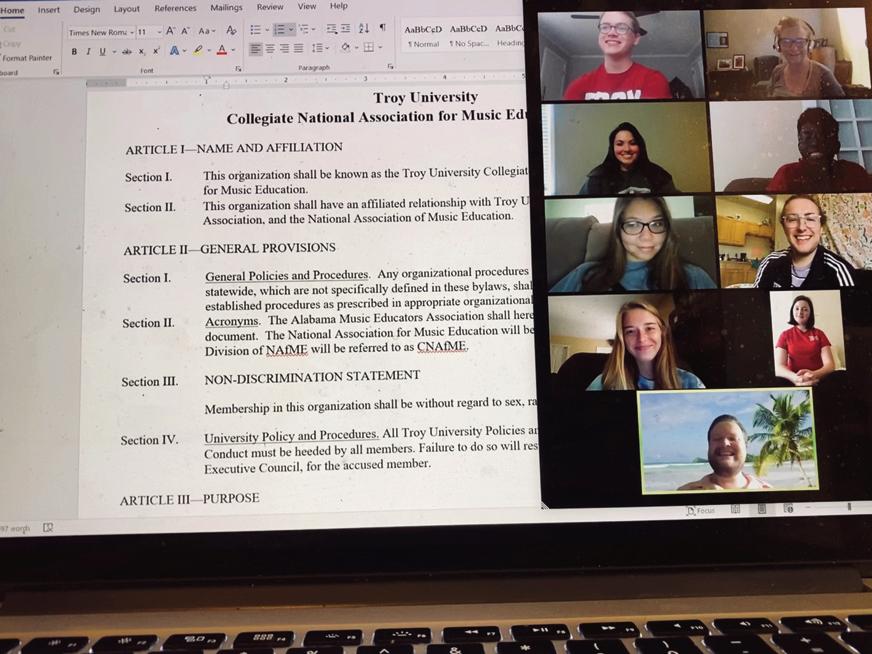

Alexa Dishroon, president of UNA’s

chapter writes, “UNA's chapter is holding ‘music education roundtable’ discussions via Zoom every week. Here, we present and discuss topics in music education. Our discussions also cover our personal teaching philosophies or procedures, and we discuss and share ideas and advice all in an effort to build us as future music educators.”
Troy University’s president Caroline Swann states, “Our cNAfME chapter has stayed in contact by having our business meetings over Zoom! We are also going to have an edTPA workshop with a guest speaker. Recently we held a business meeting where we talked about the bylaws and nominations for the executive team for next year.”
As chapters continue their normal routines from home, we are seeing how technology has changed how we interact with each other. While last month it would have been easy to say that we are terrified of how education will look in the coming weeks, cNAfME has proven they can carry on through online
and engage with each other without face to face interaction.
At the University of Al abama, students have engaged with online resources. President Isabelle Page writes, “I doubt we’ll have a synchronous meeting with the entire chapter. What I plan on doing is to research some online learning tools for music teachers being used currently or to talk to music teachers currently teaching online classes, and compile some narratives or tips/tricks on how to navigate such a unique situation. I think what’s happening right now is horrible, but at the same time, it’s a learning opportunity for future teachers that I think we should take advantage of—it’s an excellent example of how teachers have to be ready to change their plans, so it’s something we should all be keeping up with.”
Our chapters are quickly learning what it means to be adaptable, which is an important trait any teacher should possess. As we continue to navigate the uncertain days and months ahead, ALcNAfME will continue to function and engage with each other with the goal of producing better future music educators than we had at the beginning of 2020. So, as the days at home go on, we will continue to learn, teach, and engage as future music educators.
and become better edu cators from home. While many of our chapters have been able to meet synchronously, some chapters have had to adapt

How are we going to get through this? What are my students going to do? What about my concert? How will I recruit for next year? What about auxiliary and drum major tryouts? How will I teach my content digitally? These are all BIG questions that we have all had to answer over the past 5 weeks. None of us would have ever imagined on March 1 what April would look like for our programs, but there is one thing that I know for sure, we as band directors and music teachers ALWAYS find a
path for our students and programs whatever is put before us.
I have never been so proud to be an educator than I have the past month. To see teachers rolling up their sleeves, learning new technologies, sometimes going back to old school methods, reaching out to their colleagues to help and to ask for help and to see the teaching community come together more than I can ever remember it being together during my 29 years of teaching. We have
In the days ahead think about the following things to help your program:
1. Attend some PD sessions online to aid you in this time
learned how to zoom/hangout and virtually communicate with ease and learned how to offer instruction in so many different ways at a moment’s notice all because we wanted to do everything we could for our students. You are to be commended for all that you are doing during this unprecedented time. Keep your heads up and keep on moving forward. These days will end soon enough and what you do right now is setting the pathway for your program’s future!
2. Look at your program and implement some things you’ve wanted to but haven’t had the time (I’ve revamped my student leadership application procedures and how I will train them for the Fall during this time)
3. Spend time getting organized as you close out this year and are getting ready to tackle next year
4. Plan for summer activities –
a. Have a plan A for normal summer
b. Plan B for shorter summer,
c. Plan C for what would happen if there are no summer activities – don’t be caught off guard, plan NOW
i. Remember, if you fail to plan you have planned to fail!!!!
5. Start now planning Concert Band literature your band for the next academic year – order in September
a. Veterans Day
b. Christmas
c. MPA

d. March Madness – if you’ve never done this concert - DO IT
e. Spring Concert
6. It’s not too late to recruit – put together a video of your leadership students encouraging younger students to be in band – use iMovie or the like to put this together and get this out on social media and to your school – ASSUME THAT ALL YOUR UPCOMING STUDENTS ARE GOING TO BE IN BAND AND GO AFTER THEM!!!!!!!!!
7. Use this time to market your program in a positive way!!!
8. Look at your finances and how you will manage them in the Fall since most of us missed a fundraiser this Spring

“I have never been so proud to be an educator as I have this past month.”
All-State – All of the clinicians from the 2020 event will be with us for the 2021 event in Mobile. All of the registration money for All-State, the Solo Festival, and the Friday lunch has been refunded to the schools.
Summer Conference - As of now, the ABA Summer Conference is still a go. The board will meet in May to make a final determination about this event, but we are hoping that we will be able to have the event as planned. Doug Farris will be sending out a room link very soon to the membership for this.
Solo and Ensemble - Our bylaws allow for Solo and Ensemble to occur anytime from October through May. Each district has been encouraged to offer two solo and
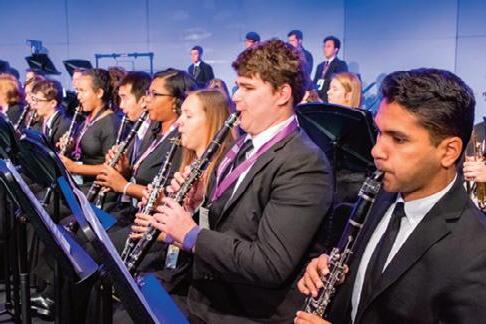



ensemble events next school year for our students. This is something for each district to discuss and see what works best for your district.
AMEA 2021 - All legislation that was going to be voted on at the All-State festival (2020), will be moved to the 2021 AMEA conference so that the membership will have the opportunity to discuss the legislation before we vote on the legislation.
AMEA has a resource page at myamea.us where we can all go to find resources to help during this time. You can also place your ideas and resources here to help us build this site. Also, remember to be proactive and positive as we move forward. The future of our programs will depend upon how we handle this time with our students and their families.
Take time during all of this to invest in personal growth, time to invest and grow with your family, time for your faith, and time for your musical journey as well. I am setting aside 30 minutes a day to sit down and practice my horn. I always complain I don’t have the time, well now I have nothing but time. Remember that this will end, and we will get through this, what matters is what we did with the time we had and did we invest in the things that really matter!!
Stay strong!!
This is your association. Let us all strive to make it better so that we can serve the students and the bands in our state better. We are ABA and together we CAN do great things!!
TerryGreetings colleagues! With great excitement and anticipation, I welcome my new appointment as president of the Higher Education Division of the AMEA. I appreciate your confidence in my abilities and look forward to serving the members of this great organization. My predecessor Mildred Lanier was an effective leader and I will work diligently to maintain her standard of excellence.
Over the past sixth months, the world has become a different place. I commend all of your efforts to remain connected to your students. Music educators are amazing people! Although this pandemic has had negative impacts on us, it has also pushed us into the future.
Video conferencing is now ubiquitous and widely accepted as a communication tool. I can’t count how many video conferences and webinars I’ve been on in the past few months. How did we get along without Zoom and Google Meet? My technology skills have taken a major step forward and I hope yours have too. Recognize that we are living through a major transformation in education. I’m not heralding the death of the
traditional classroom, but accepting that video conferencing now has a permanent place in our educator’s toolbox.
I’d like to acknowledge the AMEA Executive Board for their proactive response to the pandemic. I attended the Town Hall Meeting (video conference) on April 20 and found it very engaging. Phil Wilson and Susan Smith provided practical strategies and expressed our collective uneasiness. More meetings are on the way so monitor your email and the AMEA website for future dates.
In addition to the Town Hall, AMEA has added a new Alternative Music Teaching Resources link on its homepage. Developed by Carl Hancock, the resources are organized by specialization and contain links to helpful sources recommended by AMEA members. Remember, this resource is not only for P-12 educators. We need your help in identifying websites and strategies that are useful in higher education.
I’d also like to commend the Alabama State Board of Education for easing
internship requirements this semester. Music education interns across the state were not able to complete their 16 weeks in the classroom. The SBOE granted full credit to those students for their time in the classroom and also created a temporary educator certificate so that the interns can apply for jobs in the fall. I hope the SBOE also considers easing the 161 cut-score on the Praxis exam.
This year, NAfME is combining its annual conference with the biennial Music Research and Teacher Education Conference. It is scheduled to take place in Orlando, FL from Nov. 4-8. One goal of this combined conference is to facilitate the interaction of P-12 educators and faculty.




Speaking of interactions, the pandemic has highlighted the importance of personal interaction in our personal and professional lives. We are busy people, but we also need time to develop relationships with people who are important to us. Lesson learned – life is more musical when we have relationships that keep our hearts beating and inspire our imaginations. Best wishes for all!









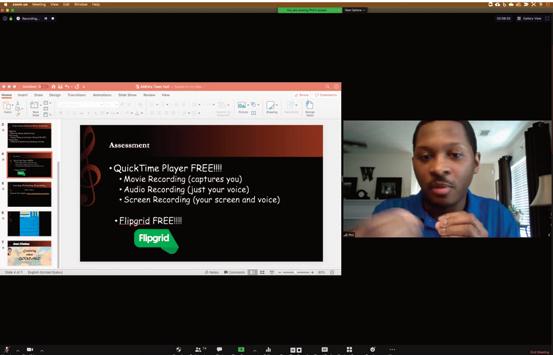


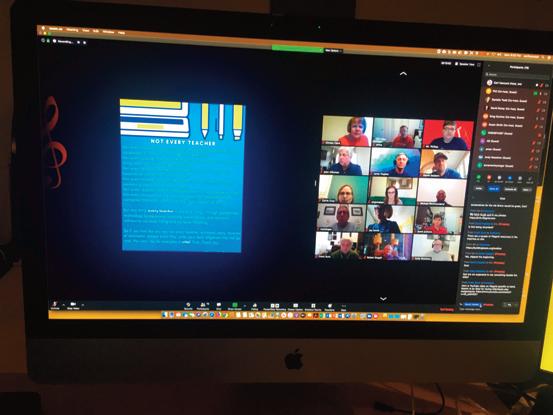
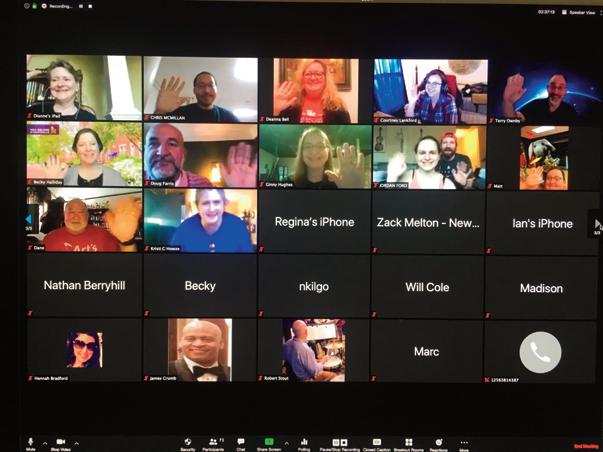



MUSIC THAT WILL CHANGE YOUR WORLD

Editor’s Note: A memorial tribute to Dr. John M. Long will be published in the August/September (print) issue of Ala Breve.

DR. JOHNNY LONG passed away February 24, 2020 at the age of 94. Over the course of a career that spanned seven decades, Long brought national attention to the young musicians in the state of Alabama with his energetic style and enthusiasm for music education. He was a member of AMEA for 70 years, serving at Blount County (Oneonta) High School, Fort Payne High School, Robert E. Lee High School, and finally Troy University. At Troy, he established the National Band Association Hall of Fame on campus and was elected to membership. He is a member of the Alabama Bandmasters Association Hall of Fame and a recipient of the Sudler Award from the Sousa Foundation and Sondheim Prize from the Kennedy Center. He was elected President of the American Bandmasters Association and, through partnering with then-President Reagan, helped to make “The Stars and Stripes Forever” the official march of the United States of America. We will have more on Dr. Long’s life and career in the next issue of Ala Breve. (Contributed by Michael Bird)

Pelham Mayor Gary Waters presents a proclamation recognizing Music in Our Schools Month to HED President Mildred Lanier at the March 2nd Pelham City Council meeting. Mildred states, “As a City Councilor and President of the Higher Education Division, I am proud that this represents our division and AMEA.”


Afamous saying my wife loves to share with her students is “often times we find ourselves in a situation that is not our fault, but it is our problem.” This is usually proceeded with a student mumbling, “that’s not fair” or “I didn’t do that,” etc. I find this saying much better than some I’ve heard before such as, “life is not fair, get over it.” As you can see, one response presents a problem that has a solution and the other just accepts the fact that things are bad and you should just accept it.
Make no mistake, people are hurting mentally, physically, and financially and there is no quick fix or easy solution to the problems we face. We now find ourselves having to choose how we handle COVID-19, which is completely not our fault but is our problem.
One way to deal with the problem is to focus on the positives that have come out of this pandemic. This will not change anyone’s financial status or even heal a sick body but may bring peace to someone by recognizing there is good that can come from any situation.
For this exercise, let’s call it the 19 opportunities of COVID. Now that we are deep into virtual/distance learning we have the opportunity to:
1. Strengthen your passion for music: You now have an opportunity to practice again. Pull out your senior recital music and relive the “glory days.” Play/Sing your student’s music and gain better insight with the struggles they may have with what you have assigned.
2. Discover Digital Teaching Strategies: Take time to dig deeper into the process of virtual learning. You may find strategies that you will want to continue to use after normal operations resume.
3. Learn New Applications: Have you ever wanted to learn how to make videos or professional-quality audio recordings? Now is the time to invest in a related skill to your profession.
4. Publish Digital Content: Create a YouTube account and build a digital library of “how-to” videos for your

program. How many times can they watch a video on how to properly put a plume in a shako? More than you can explain it.
5. Connect with Parents: This is a great time to communicate with your student’s parents individually. You may be surprised by what you learn about your students by hearing it directly from their parents. This is a great investment in your program.
6. Organize your Files: Does your desktop look like an icon wallpaper? Create a system of storage that will allow you to find your files quicker. Clean out your inbox and organize folders to store those you must save.
7. Listen to Music: When was the last time you had an opportunity to cleanse your pallet and actually enjoy listening to music for pleasure? Now is your chance to put on a pair of headphones, close your eyes, and have quality time with your favorite music.
8. Collaborate with your Colleagues: Find people in your area and set up a meeting to share subject ideas, solutions, or just have a conversation with someone that can empathize with you.

9. Sharpen Your Saw: Seek out online professional development opportunities. The NAfME website has many sources that provide free professional development clock hours.
10. Spread Hope for Students: Meet with your students online and be the positive influence in their life. For some of them it may be the only smile they see all week and it will be needed more now than ever.
11. Enjoy Family Time: Cherish the moments you have with your family. You may never have another opportunity like this again.
12. Reconnect with Old Friends: We live a busy life. Take time to reach out to those old childhood friends and catch up. Take a walk down memory lane and share old stories.
13. Exercise Daily: Find a group of friends and create a “Zoom and Move” meeting. Run and exercises together
while you hold each other accountable for added motivation.
14. Complete Home Projects: With the encouragement of my lovely wife, I was able to finally paint the fence a year after I said I would. You may have a loved one that has planned opportunities for you as well.
15. Read: TV is out and digital audiobooks are very popular. Try audible.com if you don’t know where to start.
16. Find a New Hobby: Outdoor hobbies are my personal favorite and can contribute to your overall health and wellbeing.
17. Love Thy Neighbor: Do something nice for someone, especially if they are suffering during these times. Pay it forward or do some yard work for someone that is unable. You may find it will bless you more than it will them.
18. Slow Down: Appreciate what you have. Take a moment and reflect on how lucky we are to be a part of this incredible profession.
19. Grow Spiritually - We teach the fundamentals of playing an instrument or singing to our students every day because it benefits them when the music becomes more difficult. A spiritual daily walk is the fundamental that has provided me with more than I could ever do on my own. As a follower of Christ, I am a very blessed person even when life becomes difficult.
I’m sure your list may look a little different than mine but the most important thing is to think positively during these uncertain times. I’m convinced we will exit this pandemic much stronger and wiser if we allow ourselves to see the silver lining.
Login to social media on any given day and it is not uncommon to see pictures of students, teachers, and classrooms from those involved in education, whether they are educators or have school-aged children. As someone who works in music education, the pictures on my news feed are often related to music classrooms, and typically due to privacy concerns the pictures do not usually involve students. It is not uncommon for me to see a picture of an empty classroom posted by music teachers in celebration of the new school year or semester beginning, to advertise open houses commemorating the addition of a newly updated or constructed music room, or to signify anticipation for an upcoming music event. However, in recent weeks my social media feed has been bombarded with pictures of empty classrooms for a different reason: COVID-19 (Centers for Disease Control and Prevention, 2020).
This shocking pandemic has caused traditional teaching methods to come to an abrupt halt for teachers, students, and schools; a situation filled with sadness and uncertainty. Classroom teachers have closed their doors, and instruction has moved to online and remote alternatives that often do not include traditional ideals used in the music classroom. Music assessments students and teachers have spent months preparing for have been canceled, concerts have been postponed with uncertainty, and individual instruction has moved from in-person to online if it exists at all. As music teachers deal with this new idea of “normal” to continue the academic year, anecdotal evidence suggests that looming concerns related to recruiting are abundant. “What will next year look like for my music program? If we do not go back to school this semester, how will I recruit students? If students do join my program, how will they be placed on instruments?” These
are sizeable concerns for music teachers, especially those of beginning level ensembles, as a large amount of recruitment occurs at the end of the spring semester, over the summer, and at the start of the fall semester. Unfortunately, there is no timeline available for COVID-19 to help ease the concerns of teachers across the state of Kentucky and the nation. It is simply a waiting game as government mandates rapidly occur and educators simply try to keep up.
In an effort to help the music community brainstorm and develop creative ideas for recruiting during this challenging time, I will discuss recruiting in regard to the three questions mentioned above. Most of this information will pertain to beginning level ensembles, but it could transfer to other areas and programs.
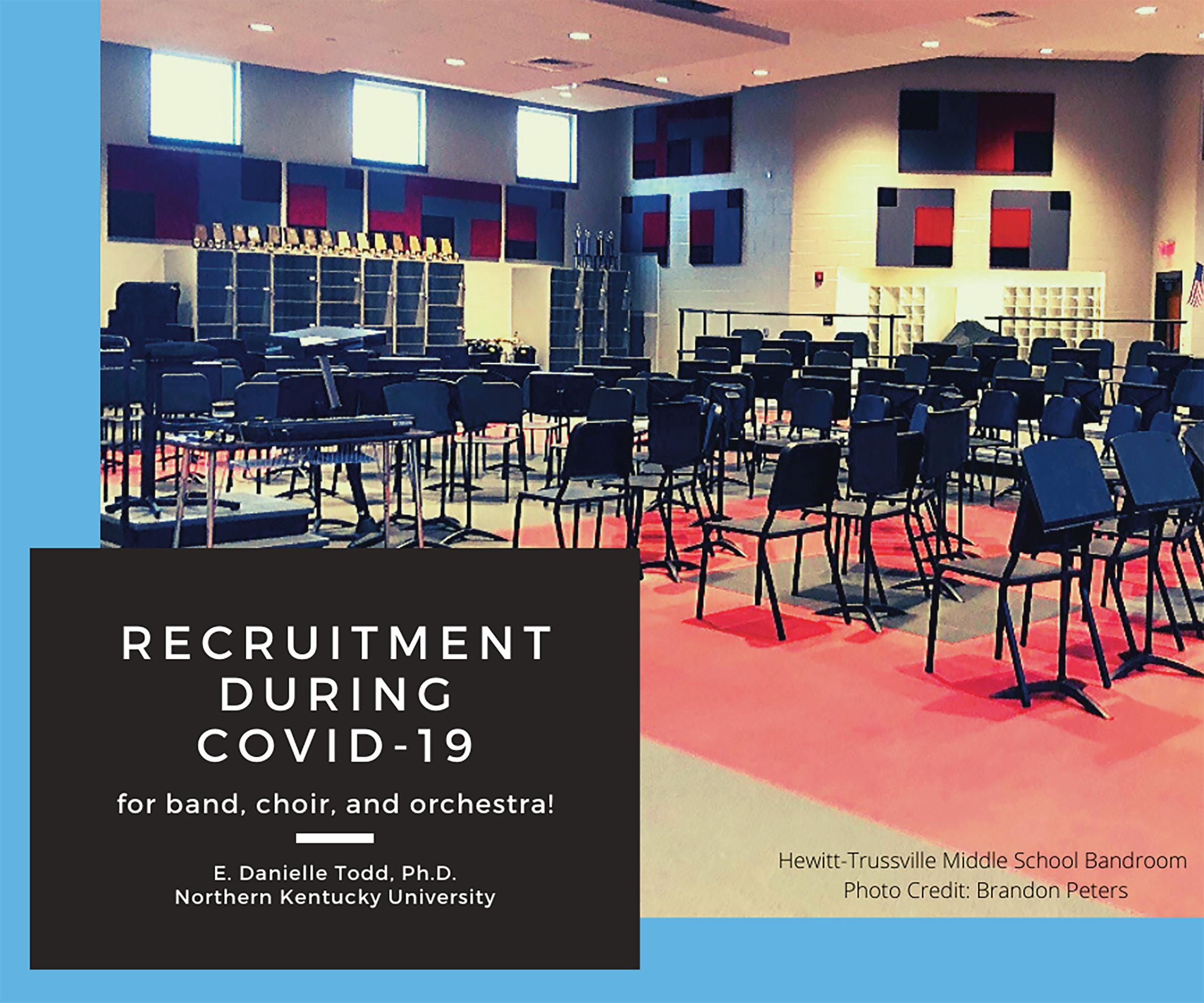
Question 1: What will next year look like for my program?
Let me pose an alternative question. Do we ever know exactly what our music program will look like from year to year? It has been my experience that we may have a general idea, but often there are challenges or unexpected events that occur that create adjustments. COVID-19 is no different in that aspect, it has just interrupted life in a much more intrusive way. At least we already know contingencies are needed, and we can start making attempts to address those now.
Some concerns that COVID-19 has brought to the forefront are not new, but more pronounced during these times. For instance, more students may have financial hardships than you have experienced in previous years. This may be more of an issue for orchestra and band more than for choir, since instruments are needed to participate. Some parents are going through financial hardships due to job loss or suspended work that shifts their priorities, and this could make participation in music a challenge. Even those who have the needed resources may be more hesitant to commit to buying an instrument during this time of hardship. Some possible solutions to help in this area are:
1. Transparency. Music educators can help combat this by being as transparent as possible. Keep parents and students in your program informed of what is happening. Make contact with them by sending an encouraging email or a recording of a past performance. Don’t let parents forget the experience they had in your music programs and that they are valued on a personal level.
Inform new recruits of fees and requirements upfront, perhaps earlier in the process than usual. Provide fee lists for parents of instruments at various price points so parents can compare and see options. When doing this I often like to have three categories: Preferred, Exceptional, and Acceptable. Explain that there are other options out there, but for student success, they should consult you before purchasing something not on the list. If renting a school instrument for a lower cost is an option, then let parents know that although their particular instrument of choice may not be available, the opportunity to participate still is.
2. Instrument drive. Start an instrument drive now! Ask former students and parents to clean out their closets, and if they have an instrument not being used that they are willing to donate, set up a way for this to occur. Many people are “spring cleaning” as they are confined to their homes. Getting this information out there now may help them decide to donate an instrument to your program rather than to a second-hand store or selling it. If they do decide to donate to your program, check to see if they can get a receipt for a tax write off. Depending on how your booster program or parent organization is set up this may be possible. If you do not have a band parent organization, perhaps running the donations through the school parent association would allow this to occur. Explore your options. You may even find someone willing to purchase an instrument for your school.
1. Monetary assistance. Most music programs have yearly fundraisers already in place; however, this year consider adding one or two fundraisers specific for covering student costs. Overrun with fundraisers already? Consult administration to see if soliciting donations for music student success is an option.
2. Explore resources. Is technology money available to purchase SmartMusic for your classroom and students rather than paying for it out of your band budget, or requiring your students to purchase it? Will the curriculum budget or library funds cover the cost of a set of school-owned method books students could check out? Is there a business that may be willing to cover such a cost if asked? Books are not necessarily a large expense, but during this particular time, anything could help. Previous students may be willing to donate gently used books as well.
Question 2: If we do not go back to school this semester, how will I recruit students?
Good news! Even if you feel like you have not started recruiting for next year, you have! In a previous article (Todd, 2013) I discussed different types of recruiting methods. Three ideas from that article apply here: Tradition, selling your program, and being the face of the program. Your music program already has a reputation in the community that is recognized by students and parents. In fact, several parents may have participated in the program. Oftentimes, some of the recruiting you need to do has already been done for you—you just have to capitalize on it.
1. Social media. Don’t have a band social media presence? Now is the time to start one! Pick a platform and go for it. Facebook tends to serve parents, and Instagram and others tend to serve students more. You can use more than one platform and connect them, or choose the one that works for you.
2. Advertise. Find ways to highlight your music program on your school and music website, and on social media pages. Highlight past group accomplishments, post a student of the week and highlight current students and alumni.
3. Involve your students. Create a hashtag for students that includes the name of your school and program (e.g., #cupcakemidddleschoolchoir). Give your students a weekly challenge to post their favorite band picture or a performance video of your group. Have them post pictures from a group trip, or of them performing individually. Have them share pictures wearing their band or school t-shirts during COVID-19 at-home activities.
Additionally, most of your students have younger friends, and they could serve as great recruiters. Encourage students to invite at least
one potential recruit to “like” your social media page or have an “invite a friend” challenge. Have all of your band students invite at least one person by written invitation to join your choir, band, or orchestra. You can provide the invitation to make this easier.
4. Be virtually present. During this time of isolation, consider being “the face” of your program virtually. Post on your school, program, and personal social media accounts: not just about events and pertinent information, but with messages from you. Create short recorded videos of encouragement, or branch out and join TikTok (If you are unsure of what that is, ask a student! They know!), and share those videos across multiple platforms! You can create short videos of yourself playing your instrument, demonstrating various instruments, and showing music you intend to play upon return to school among other things. Wear your school or band shirt to serve as advertisement. I don’t recommend friending students on social media, but sharing from your personal account in addition to your school account could be seen by a potential student, and someone on your friends list may recruit a student for you.
5. Traditional delivery. Even with social media and website options, do not discount the power of “old school” delivery. Send information to parents and students by creating a postcard or flier that can be mailed (and shared on social media/websites). Ask your principal about available funds and access to addresses. To keep costs down, postcards are cheaper to send than letters/fliers. Consider giving fliers to the school to pass out to students who are picking up assignments, documents, or lunches during this time. Just remember to do this at the elementary school that feeds your program if it is a different school.
6. Phone calls. Parents will have questions and concerns that only you can answer, and they may not ask unless they are encouraged. Do not hesitate to schedule online video conferences or simple phone calls with parents to make that personal connection. It takes time but calling all parents to extend an invitation for their child to join your group can be very beneficial. If you feel uncomfortable doing this, create a script so you don’t have to remember everything you plan to share.
7. Email. Parents get a ton of emails, but perhaps during this time of sensitive information, they are checking it more often and more carefully. See if your school can give you access to email addresses for parents of upcoming students, and send them an email with the flier to introduce yourself and invite them to join your program. If obtaining emails is not possible, ask if you can email the school a letter/flier and have them email it to the parents for you. This
shouldn’t be a problem since you are a school system employee, but check your school’s rules. It may be possible but has never been done because no one asked.
8. Go virtual. Virtual opportunities may be unfamiliar territory for some directors, but consider taking an event you always host and turning it into a virtual event. For instance, you may have scheduled a concert for recruitment purposes at a local elementary school that was canceled. Replace this concert with a virtual event for students and parents to attend. If you have a recording of your ensemble, share it virtually in a group-viewing situation that can be hosted through a service such as Zoom. If you do not have a recording of your group, host a watch party for one of the several online events streaming for free online. For example, many orchestras are giving free streamed performances. Or, find a recording of your favorite professional band, choir, or orchestra and host a watch party. By hosting the party, you can answer questions and make comments throughout the performance in the comment section, or you can pause the recording to point out certain instruments, etc.
9. Online sessions. Host a question and answer session using Facebook Live, Instagram, Zoom, etc. You can also pre-record an interest meeting where you give pertinent information about your program and the opportunities available to parents and students, then post it on your website and/or social media.
Question 3: If students do join my program, how will they be placed on instruments?
This question is more specific for instrumentalists, but very important.
1. Right now, give yourself permission to do something different. With such uncertainty, it is not feasible to set concrete deadlines and goals. This will only lead to frustration and disappointment. Instead, set up a general plan that you can implement anytime. Consider talking to your administration, and reminding them how your program works; there may be schedule changes needed the first few weeks of school, encourage them to give you a deadline for these as soon as possible.
2. To make final instrument selections, many schools host instrument petting zoos or testing days. If you have not already done this, it may not be possible currently, and will have to occur at a much later date than usual. That is okay. Take this time to get students committed to joining your group, and if they don’t have instruments when school begins, teach fundamental music concepts. Some schools do this regularly and find it beneficial. I had a band that did not get instruments until after Labor
Day and by the holiday concert they were as far along as any other group I ever had.
In the meantime, an alternative may be to create a video showing the different instruments that actually includes you and your voice. Including yourself is an important aspect because your excitement and encouragement will help guide students and make them feel more comfortable and connected. This exposure could help students know their interests and jumpstart the selection process when they do get to play instruments postCOVID-19.
3. Use already developed
programs to help expose your students to available options. For instance, websites such as Be Part of the Music by Scott Lang are ready to use now and could relieve your stress. Band and orchestra options are available.
No matter which method(s) of recruitment you choose, perhaps the most important action to be successful is to Follow up! There are many high priority concerns worldwide, and it is feasible to think that participation in music six months from now is not at the top of that list. A phone call or email can make a difference.
No doubt recruitment is an important aspect of all music programs, and these new conditions we are experiencing can cause anxiety and stress. As with many approaches to online instruction, it is not important that we reinvent the wheel regarding

recruiting, but that we alter actions to fit current challenges and use resources you may not always consider. Be kind to yourself. Don’t hesitate to try something new. Explore iscussion groups on social media. Music teachers are resilient, and they make it through many struggles daily, COVID-19 will be no different.
Sources and Recommended Reading: Centers for Disease Control and Prevention. (2020, March). Coronavirus (COVID-19).
https://www.cdc.gov/coronaviru s/2019-ncov/index.html
DANSR Vandoren (n.d.). An interview with Scott Lang. Be part of the music: A recruitment, retention, and advocacy program. https music-a-recruitmentretention-and-advocacy-program

Drydyk, K. (2019) Recruiting beginning string players. Blue Grass News, Fall 2019, 13. https://online.flippingbook.com/ view/39327/12/
Lang, S. (2019). Be part of the music. https Todd, E. D. (2013). Getting students in the seats! Ala Breve, May/June, 31-35.
Victoria, H. (2012) Practical tips for recruiting new singers to your choir. Choir Resources.
https://www.totalchoirreso urces.com/practical-tipsfor-recruiting-new-singers/ WALTER, W. G., & CHAFFEY, D. (1959). Bacteriological and cleaning studies on the mouthpieces of musical instruments. Applied Microbiology, 7(2), 126–130. https
Dr. Danielle Todd is Assistant Professor and Coordinator of Music Education at Northern Kentucky University.

 by Dr. Matt Leder
by Dr. Matt Leder
Introduction:
I have been teaching online lessons for over 10 years and while I do not consider myself the expert in online teaching, I have had a lot of success with students online. There are some in the teaching industry that are very skeptical of online teaching, especially within the applied lesson setting. If online teaching in the applied lesson area is inadequate, why have I had so much success? My online students have made All-State, have been awarded graduate assistantships, won various auditions, or simply become better musicians. It’s been extremely rewarding to have an impact on students all over the globe. I have had students across the nation, in Canada, and Europe. The most difficult task has been to remember what time zone they are in! I hope that some of my experiences and thoughts will help those educators that have been forced into online instruction.
1. Do not panic! Embrace the change and stay positive.
2. Become familiar with online platforms before working
with your students. I would suggest that you are familiar with a variety of online platforms. What may work for one student, may not work for another. Consider the immediate change for the student. Meet them halfway with technology they are already familiar with! Facetime, Skype, Facebook Messenger Video, Gmail Video, Google HangOuts, Zoom, etc. are all possibilities. You don’t have to know every online platform but be familiar with a few of them to give students options.
3. There are countless resources available to you! There are several online forums on Facebook, advice on Music Education websites, and YouTube videos that will walk you through the various functions. How many of us that own a car or home and have watched a YouTube video to “fix” something ourselves? Reach out to colleagues if needed. Use your resources!
4. When meeting a student online, remember rules of etiquette. If you are working with a younger student, I always permit a parent or guardian to be present during the lesson. Remember to dress professionally. This doesn’t mean you have to put on a tux to teach
an online lesson, but I’d argue that you should not teach in an old T-Shirt. You can still maintain a professional environment in an online setting. This is especially important considering the one-to-one ratio in teaching. Also, please keep your camera angle in mind while teaching.
5. It will take some time to get into the “groove” of teaching online instrumental lessons. Be patient and try to learn from each lesson. Possibly keep a notepad by the computer so that you can make notes in between lessons and then reflect on what you can do better at the end of the day.
6. Go into your first lesson, and possibly second lesson, online with the goal of sorting out logistics and connection issues. If you teach anything beyond that, it’s icing on the cake. Don’t worry, you and your student will figure things out and will be well on your way!
7. If you are teaching several applied lessons back to back, I’d recommend that you give yourself a break in between lessons. I typically teach 50-minute lessons, with a 10-minute break between so that I can review notes on the next student or just take a mental break!
8. At the end of each lesson, I would advise typing up expectations for the next lesson. This can be done in a chat window or an email to a student. If you have a lot of students, this is
well worth it! It helps keep the student organized and it helps remind you of what your student was assigned.
In a perfect world, both student and instructor would have high speed Internet, high end microphones with audio interfaces, and possibly multiple screens. However, most of us will not have that luxury considering the circumstances we are all in. I have recently seen some awesome home set ups, but again most of us will not have this luxury. Everyone can teach on a basic level using the microphone input on your laptop, desktop computer, or their phone! Yes, as a gigging musician I have taught lessons over my iPhone while on the road. You can work on basic fundamentals, basic concepts, notes, and rhythms.
Sound on the Internet is compressed. Be patient and flexible. If you need to get into the “weeds” of sound (perhaps one of the most important fundamentals), I would suggest that students record themselves with their phone. If they are fortunate to have a H4N Zoom product or other recording device, they could record themselves and send it through shared Google Drive or Drop Box. Regardless, recording yourself is an extremely useful tool in teaching! You can also use earbuds with a microphone to make things a bit clearer. I bought a home movie surround sound system and
have speakers set up around the office. I feel like they are in the room with me! I have seen some colleagues that state they are not comfortable teaching online lessons, so they will simply ask students to only submit recordings for feedback. Written feedback is great, but I would urge that social interaction will become even more important in the days ahead. Have your students submit recordings but meet with your students online so that you can mentor their development on a more personal level!
When teaching, try to find an area that is free from distractions. If you have kids or other family members in the house, make them aware of your teaching schedule. I’ve been teaching for so long that our three kids know they are not to disturb dad while he is in the practice studio! This goes without saying, but don’t have other online windows open while teaching. I would recommend only working within the one window unless you need to find a resource for the lesson. Be respectful and focus on the student!
Make sure your camera angle is set for teaching. If you are using your phone or iPad to teach, make sure your camera is not looking up at you (no one wants to look up your nose). If you are using a phone or iPad, make sure it is propped up so that you are facing the student. I would recommend that you plug in your phone or iPad into an outlet so that you never lose power during a lesson. Most camera angles from a computer are great. If you are using an external camera, make sure it is set up the way you want it prior to starting the lesson call.
In terms of setting up a schedule for teaching, I would recommend that you assign a regular meeting time each week for each student so that the volume of students does not overwhelm you. Advise students to log on prior to their assigned lesson time so that you do not lose any time. The instructor should initiate the call when they are ready to begin the lesson.
If you have never taught an applied lesson online, it is different! Over the years of teaching online lessons, I have discovered some good practices and I am happy to share them here. Given that many of us will be forced to teach in this environment, I will also offer some thoughts and suggestions.
1. Encourage your students that things will be okay! Use this time as a ‘gift” to improve your craft. Look on the positive side, the commute is awesome!
2. Have your student warm up before the lesson, unless you want to cover a warm-up routine.
3. Have the student log on before the assigned
lesson time and the instructor will initiate the call when they are ready. Instructor’s monitor your time while teaching so that you are on time for the next lesson. Also, I would recommend a 10minute break between lessons so that you can review lesson notes or take a mental break.
4. If you are using your phone to teach, make sure your do not disturb is set so that your lesson is not interrupted.
5. I would recommend that the instructor has some water and a perhaps a notepad to take notes available before the lesson begins.
6. Have the student set up the phone/computer in a way that you can monitor posture and physical technique. If a horn player is playing, I would advise that they face away from the computer when playing. If a horn player plays directly into the computer screen the student can get load sound reflections from the screen, it is difficult to evaluate the embouchure, and there are times (especially in the extreme upper register) where the mic can short out. The video will remain intact, but the sound will fade to nothing. The sound will return in a moment, but just be aware this can happen. Most of the time my students are playing in the mid register and I never have a problem. If you need to teach someone in the upper register, I would advise changing the mic settings or simply backing away from the microphone as you would in performance!
7. Online teaching is a lot of stop/start. I play, you play! I’m okay with that. Modeling is a great way to teach! You may want to teach in smaller sections to give quicker feedback, but there are times when I will have a student play the whole tune, so I give an overall impression of the larger work. Feel free to take notes while the student in performing.
8. Be creative in your assignments. I have had a few conversations with Branford Marsalis on the pedagogy of “listening”. Every one of my students are required to listen to YouTube videos or CD’s each week. The first time we initiate the listening assignment, I just have them listen to five recordings and write a paragraph describing what they hear. The next lesson I read over their reflections and I can tell “how” they are listening. At that point, we talk about best practices in “active listening” and we assign five more artists to listen to for the next lesson. Through this continued process we improve listening skills and we help put direction into their desired development. The results are incredible! When a student has studied with me for a long period of time, they are familiar with a large list of artists and they have been exposed to a lot of music! Note: I would have students write out a short paragraph for each recording. During the lesson they can summarize while they look at their notes.
9. You can use play-alongs during the lesson. Have the student pull up a separate window with a YouTube backing track and have them turn up the volume. If they are working on a transcription, you can have them play along with the original recording. I have done this for years and it works great! Note: Make sure any backing track that is played is on their side! Otherwise, there could be a delay.
10. Students can have a metronome playing in background while they are performing an exercise or solo. I have had students use metronomes on their phone while they are on their computer or they can pull up a separate window to google metronome applications. Again, make sure the sound is originating on their side. Otherwise, there could be a delay.
11. Have your students record themselves! This is a great way to monitor progress and I find that I listen in greater detail to their sound away from the live lesson. Recordings can be submitted via Dropbox, Google Drive, etc.
12. Before you log off the lesson, summarize what was covered in the lesson and go over expectations for the next one.
13. When you log off the lesson, type out a summary of expectations for the lesson in a chat window or email. This is a record for both you and the student!
14. Be patient with your students. This is a new platform for many and remember humor can be a long way. Be personable!
15. There are countless artists that are putting out free online warm-ups online or instructional videos. There are Facebook groups that are encouraging collaboration. Share ideas of what you are working on in the “woodshed”. Contribute to online groups such as “Jam of the Week”. Social collaboration online can be a positive thing! Perhaps create a private Facebook group where students in a studio can share performing videos of the week, etc. There are countless possibilities!
16. Encourage composition for your more advanced students. Encourage readings for your students. There are great books and articles out there that are fantastic for developing a musician. Read about pedagogy or history! This would be a great time to learn about the people behind the music! Be creative in your assignments. Students will have time on their hands. Let’s be productive!
17. Have students move back to see breathing and posture. Have students move closer to camera if you need to get a closer look at their embouchure. Sometimes you can get closer than you might in person!
** Let’s say the lesson starts at 2pm via Facetime, Skype, Facebook Video, or another online platform. Make sure you are
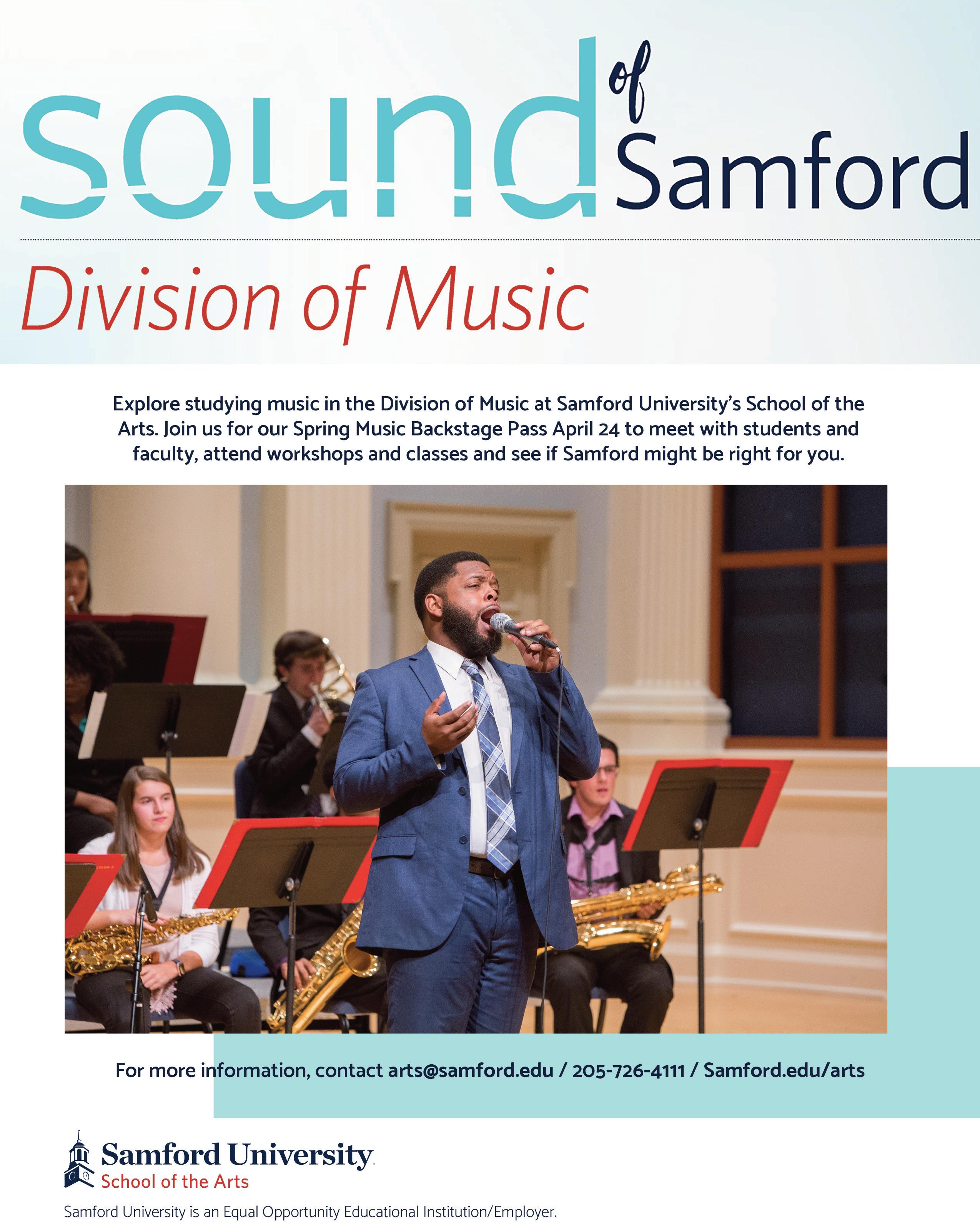


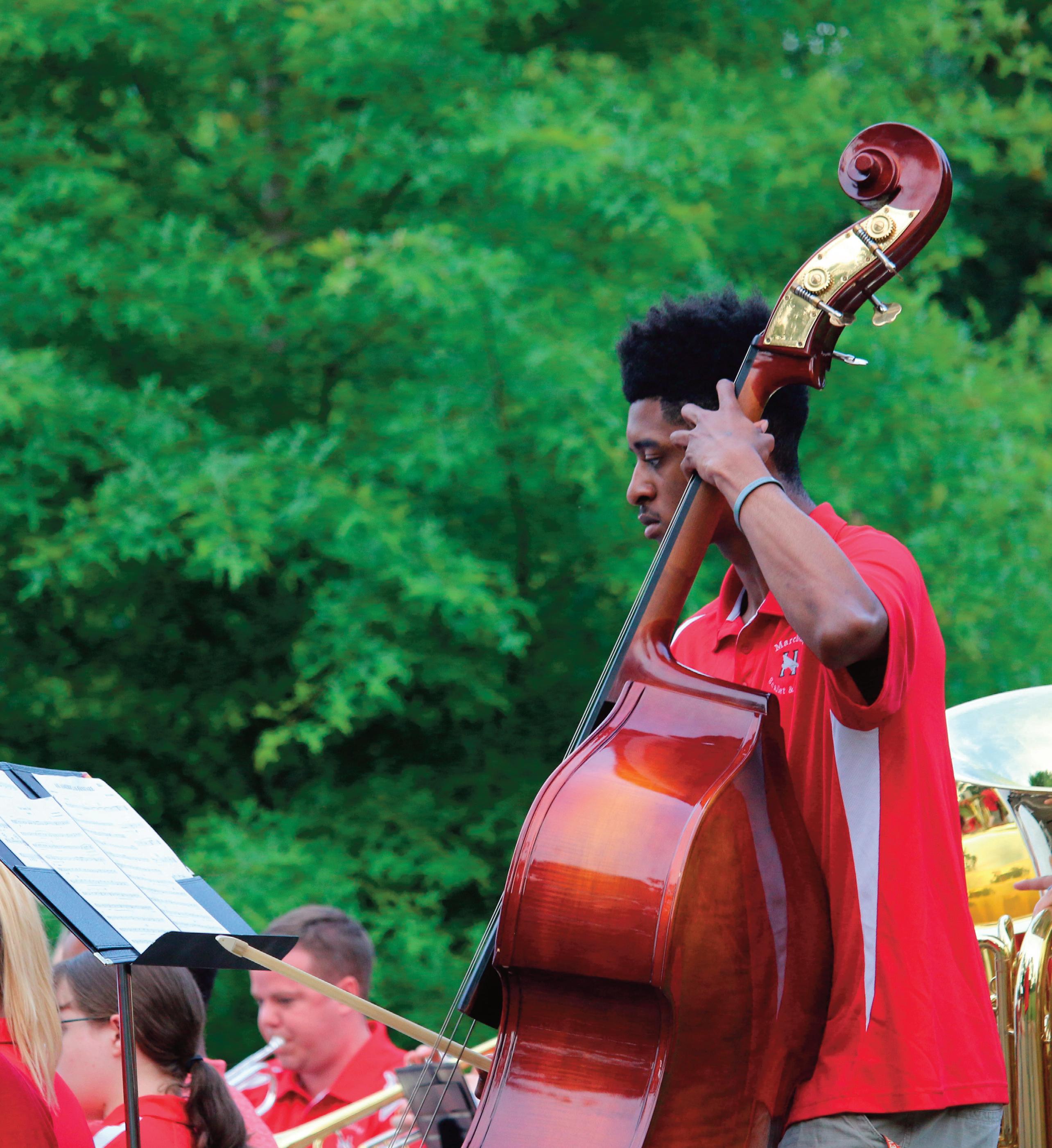
logged on and everything is working properly. Have water, notepad, pen/pencil, music stand (if needed), and any other materials needed. Make sure you as the instructor are warmed up, dressed properly, and are in an area that is free from distraction. Make sure your household knows your schedule and put your phone on do not disturb (especially if you are using your phone to teach).
1:50 PM: Review student notes and possibly take a pic or write down expectations that were created for the lesson to serve as an outline.
2:00 PM: Call the student via the online platform function.
2:01 PM: After an initial greeting (again be personable, we are all going to need social interaction during this time period), I ask about their listening assignment. I have the student explain who they are listening to and what they notice in the recordings. We can discuss “active listening” concepts or have meaningful conversations about artists or their desired development. Sometimes I will assign specific artists for them check out for the next week or I will leave it open for them to choose. You could also use this time to discuss any readings assigned.
2:15 PM: I ask the students perform any technical exercises assigned. Be specific in expectations from one lesson to another. Assign specific page numbers in books and metronome markings with concrete goals. Work on scales or any patterns assigned. Listen, then demonstrate! Remember, modeling is a great teaching tool. Assign work for the next week. Sometimes I recycle the expectations from the prior week if needed or I have students refine this week’s exercises while assigning new material. I have found students really like seeing progress in a book. Some students (especially younger students) will not want to work on fundamentals. As we all know, fundamentals are extremely important in facilitating growth and development in our students. If they are not into the exercises you are assigning, be creative and find another resource to cover the fundamental that needs to be addressed. For example, I have found that a lot of my students really enjoy Scott Belk’s lip flexibility books in that they sound “cool” in the “woodshed”. There are lots of resources out there!
2:30 PM: Repertoire. I will divide this section with etudes and any transcriptions assigned. Sometimes I will work on certain sections. Other times I will have the student perform the whole work for a broader perspective. Remember modeling is a great teaching tool! Give specific feedback and possibly assign recording assignments. If they were assigned to record, I will discuss feedback in between the fundamental session and the repertoire section to give their chops a break. Manage your time wisely by keeping an eye on the clock every so often. It is easy to lose track of time while teaching Online, but you will get into the rhythm of things.
2:45 PM: Summarize what was covered in the lesson and be specific in what is assigned for next week. Be positive, personable, and encouraging.
2:50 PM: Log off with the student. Type up a quick summary
of expectations for the next lesson in a chat window or email. Then, get ready for the next lesson.
Be empathic during this time. This is a new environment for both students and teachers. Be patient and understand that things may go wrong. You don’t have to be perfect to make an online lesson work.
· Be reasonable with your expectations when assigning work! This will be a difficult time and you do not to add any additional stress. Small battles in the “woodshed” can have profound effects to the overall development in a student.
Be flexible with your students, but also make sure that they are aware they need to adhere to specific lesson times. If a student is late logging in and your lesson goes over the assigned time, you will run into issues. Be prepared and have a plan for the online lesson. Structure is important.
Like most technology, it is constantly changing! I would recommend joining the various Facebook Online Groups that are consistently adding resources. One for example includes “Higher Ed Music Lessons in the Time of COVID-19”.

I’m happy to serve as a resource moving forward. I’m also happy to evolve this document with input from everyone reading. Please feel free to contact me at: or on Facebook Messenger (matt leder), or through my website (http://mattleder.com). As Clark Terry would say, “Keep on Keepin’ On”!
Dr. Matt Leder is Music Director/Instructor at Gadsden State Community College. Dr. Leder has been a professional musician for over 20 years, serving as an active duty Navy & Air Force musician for a total of 12 years & performing in supporting ensembles with Bob Mintzer, Benny Green, Nicholas Payton, & Ellis Marsalis. Matt is an in-demand guest artist, clinician, & private instructor, including through his online studio. Matt holds a DA in Music Ed. from the University of Northern Colorado, a MM in Jazz Studies from the University of New Orleans, & a BM in Jazz Performance from East Carolina University. Dr. Leder’s dissertation, “Towards An Informed Pedagogy of Modern New Orleans Style,” describes New Orleans style & offers possibilities of adding this syntax of jazz into the modern classroom. Dr. Leder has also served on the faculties of Northern New Mexico College, Brown University, University of Colorado at Denver, Community College of Rhode Island, & St. George's School & was a 2017 National Endowment of Humanities Summer Scholar at Tulane University.
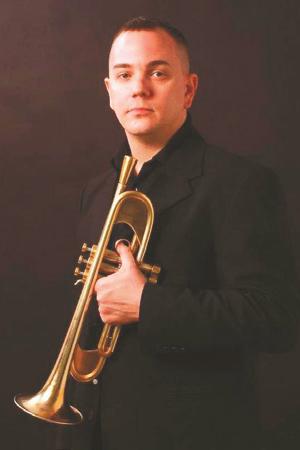
As I write this article, it is the beginning of Day 22 in my “Shelter in Place” experience. I’m sure I could devote the entire article to all of the many things we’ve all learned during the past weeks…but I think there is one thing that we all can agree on that we have realized during this period is that we miss our students. Being a part of the band means so much to so many of our students…and being able to share making music with them means so much to us. When something that important to us has been taken away from us, it is hard to not feel pain. I hope with the time that we all now have with the closing of our school buildings that we have time to begin to plan for the fall when, hopefully, we will all be back to some type of normalcy. We have all had to re-think how and what we do in so many ways and we have been forced to find
positives in a world full of challenges and difficult times. One of the challenges of making smart program choices for our ensembles has been simply finding the time to listen to all of the new music that is available to us. As we find ourselves with a tremendous adjustment with our daily lives now, I hope that we can all find time to find just the right curriculum to start the fall semester…and maybe get things ready for spring as well! The three pieces that I have chosen to bring to you are all new pieces from the most recent catalogs. Be on the lookout for all the newest music from composers and publishers over the next few months. Happy listening!
Michael Oare has provided us with so many outstanding pieces over the years. Michael’s works are always well-crafted and are always excellent teaching pieces for young bands. His works always find ways to strengthen concepts that are taught during the first few years of a player’s development. One of his most recent works, Deluge, is written for your firstyear students and is a piece that will definitely hold the interest of your students. Easy and repetitive rhythm patterns, a minor mode, and pleasing, mostly stepwise melodies combine to create a piece that you will appreciate for its educational benefits and your students will really enjoy playing. Age-appropriate scoring and technical challenges will certainly help your students solidify those important concepts of counting rests, entrances that occur on counts other than “1” and well-conceived percussion writing make Deluge a welcome addition to the young band repertoire. The reference recording and video score may be found here:
https://www.youtube.com/ watch?v=IQmd6vyLxDA
I have long been a fan of Rossano Galante’s writing. I first remember programming his piece Raise of the Son in the late 1990s. His works are almost always rooted in his cinematic background, having studied with Jerry Goldsmith at the University of Southern California. All of Galante’s works are “listenerfriendly” and are audience favorites. His works, while


beautifully lyrical in nature, provide technical challenges that may prohibit grade 3 or 4 ensembles from programming them. One of his latest works, The Wishing Well, is a slight departure from his previous works. While offering the beautiful, soaring lyrical lines, The Wishing Well falls within the Grade 3-4 level and might be the perfect piece for bands at this level to be able to experience his writing. The rhythmic construction is quite simple, utilizing primarily quarter notes and eighth notes, while the harmonic structure is constructed by the use of accidentals throughout the piece. There are solos written for flute, clarinet, and oboe (cued for flute as well) and the piece contains technical challenges for the extended range for trumpets and exposed lyrical lines for the horn section, which is a “Galante trademark”. Tastefully written mallet percussion parts also add to the lyrical, almost dream-like atmosphere created by this work. If you have flute, oboe, and clarinet soloists you would like to feature, this piece does the trick. I also think that having a flute cover the oboe solo would work really well for this piece, if need be. I hope you will give The Wishing Well a listen. I think you will really like the opportunities it provides your students to showcase their talents. The score and recording are available here: https://www.youtube.com /watch?v=jtl0xZdIZy4&list=RDjtl0xZdIZy4&start_radio =1
Randall Standridge has several works that have become extremely popular among band directors who work with young bands. When I adjudicate, his compositions are very popular and seem to be programmed quite a bit. His works have primarily been targeted for middle school ensembles, with only a few pieces targeted for high school and college ensembles. I was delighted to find his new piece Gestures and think that it is an excellent addition to the repertoire for advanced high school groups and some collegiate ensembles as well. Gestures was commissioned by the University of Northern Colorado to celebrate the retirement of their long-time director of bands. The piece is a delightful four-movement work with each movement offering distinctly different styles, or “gestures”, that combine for an enjoyable 8-minute work. The first movement, “A Smile and a Firm Handshake” begins with the ensemble playing “as if warming up before a concert, then coming to rest on an indicated note on cue”, which makes for a perfect concert opener! Movement 1 is fast-paced and has the ensemble alternating between the meters of 4/4 and 7/8, which provides a delight melody that sets the stage for the remainder of the piece. The second movement, titled “An Invitation to Dance and a Poke in Ribs”, is another brisk, brief movement that asks the ensemble to maintain the tempo marking of quarter note equals 196. The movement alternates between a cut-time feel and a 4/4 feel and requires that the ensemble play the fastmoving eighth notes in the proper style to maintain the quick tempo of the movement. The third movement, “An
Embrace…A Sigh” is very lyrical in nature. Utilizing some challenging key signatures, this movement allows the students and conductor the opportunity to showcase musical expression and musicianship and requires the students to play with mature sounds throughout. The movement also contains really tastefully written percussion parts as well. The composer has written a very beautiful melody with elegant harmonic accompaniment that I know both you and your students will enjoy.
The fourth and final movement, “A Wave Goodbye; Teaching Toward the Horizon” brings this engaging work to a thrilling close utilizing 6/8 meter with hemiola at just the right times. As the movement progresses through several key changes, each instrument group has an opportunity to play melodic material that your students will enjoy, and your audience will love hearing. After a dramatic 4/4 section, the tempo picks up for the coda and brings the entire work to a rousing conclusion. I encourage you to check out Gestures. It is a departure from what we normally expect from the composer and I hope he will offer us more works similar to Gestures. A recording of the work may be found at the following link: https://soundcloud.com/randall-standridge/gesturesmovements-1-4
It is my hope that by the time this article reaches you that we are all on the recovery side of these incredible and unique times that we are currently experiencing. Having lost precious time with our students this semester, the energy, excitement, and anticipation we all feel for what we hope is a “normal” start to our classes in the fall is at an all-time high for each of us. Let us all keep these same feelings in our hearts and minds as we work our way through the new school year. Our students deserve nothing less. Please do not hesitate to contact me if I can be of assistance to you or your program.
 Randall Coleman Associate Director of Bands The University of Alabama Conductor and Music Director Alabama Winds
Randall Coleman Associate Director of Bands The University of Alabama Conductor and Music Director Alabama Winds

All4One Fundraising LLC
1205 Randolph Ave SE, Huntsville, AL 35801
Arts Music Shop
3030 East Blvd., Montgomery, AL 36116
Halftime USA Band Front Camps
P.O. Box 66, Wetumpka, AL 36092
Huntsville Youth Orchestra
116 Shalerock Dr, Madison, AL 35756
JW Pepper
9053 Riverside Pkwy, Lithia Springs, GA 30122
Madison Band Supply
1604-B Hughes Road, Madison, AL 35758
Southeastern Performance Apparel
142 S. Woodburn Drive, Dothan, AL 36305
Troy University
109 Long Hall, University Ave, Troy, AL 36082
Southern Performances
P.O. Box 6852, Gulf Shores, AL 36547
University of Alabama at Birmingham
950 13th Street S., Birmingham, AL 35294
University of Alabama in Huntsville
301 Sparkman Drive, Huntsville, AL 35899
University of South Alabama
LPAC 1072, 5751 USA Drive South, Mobile, AL 36688

































